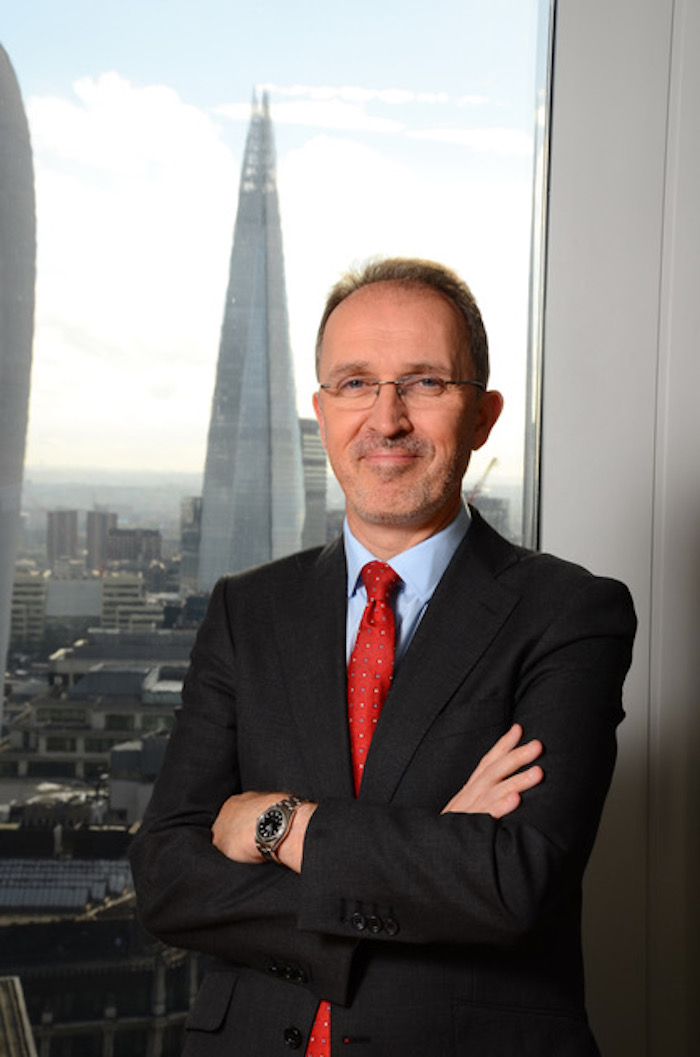
Rory is the CEO of Eperoto, championing the use of decision analysis to improve clarity around litigation and arbitration risk. Originally from New Zealand, he's worked within legal technology for decades, delivering innovative solutions to the top global firms, government, as well as specialist legal boutiques.
Below is our LFJ Conversation with Rory Kingan:
Eperoto’s approach emphasizes using lawyer judgment rather than AI or data-driven models. Why is that distinction important, and how does it build trust among lawyers, funders, and other stakeholders?
At Eperoto, we believe that lawyer judgement is the foundation of credible litigation and arbitration analysis. High-stakes disputes aren’t like consumer tech problems where large-scale historical data exists and small inaccuracies are insignificant. They're unique, context-dependent situations where experience and nuanced legal reasoning are irreplaceable. In most commercial cases, AI simply doesn’t have the training data or contextual nuance to make defensible predictions. Right now it also struggles with the complexity of jurisdictional variation and the role of precedent. No funder or sophisticated client should rely on a generic model to value a multi-million-dollar dispute.
Litigation and arbitration are inherently grey-zones. Outcomes turn not only on points of law, but also on credibility assessments, witness performance, tribunal psychology, and how fact narratives are perceived. These are areas where AI is weak and where judges and experts routinely disagree. Research across behavioural psychology and negotiation theory shows that human reasoning is still essential in these environments. Lawyers will often use an AI tool as a sounding board to explore different ideas and arguments, but ultimately they rely on their own judgement and reasoning to assess how different elements of the case are likely to unfold.
Eperoto is therefore built around a simple principle: Lawyers make the judgement; the platform helps them to structure and quantify it.
This distinction builds trust for three reasons:
- It reflects how top practitioners already work. Clients retain leading counsel for their experience, intuition, and ability to form a reasoned opinion, not for machine-generated answers.
- It avoids “false precision.” AI-driven confidence levels often create a misleading impression of certainty. Eperoto keeps the human experts in control.
- It aligns with stakeholders’ expectations. Funders, insurers, GCs, CFOs and boards want a lawyer’s professional assessment, but expressed in a structured, decision-analytic way. Eperoto strengthens, rather than replaces, that judgment.
The result is a decision-analysis workflow that is transparent, explainable, and fully grounded in legal expertise. Precisely what stakeholders need to trust the numbers behind a funding or settlement decision.
When litigation funders assess potential cases, they often rely on intuition and experience. How does Eperoto help them quantify risk and likely outcomes in a way that strengthens those investment decisions?
Every litigation funder knows that a case is a contingent asset, and valuing that asset depends on understanding the likelihood of outcomes at trial or arbitration. Yet the process used to reach those views is usually unstructured, highly subjective, and difficult to defend when presented to an investment committee or external partner.
Eperoto addresses this by helping lawyers to apply decision-tree analysis. This is a method used for decades in energy, pharma, finance, and indeed litigation. Instead of relying purely on intuition, lawyers:
- Map the key uncertainties. What issues drive liability? Likely quantum outcomes? How might damages be reduced? Where do procedural or evidentiary risks sit?
- Assign probabilities grounded in legal judgment. No AI predictions: purely the lawyers’ professional view expressed clearly rather than implied.
- Estimate costs & cost-shifting, interest, and any enforcement risk.
From this the tool calculates a visual quantitative risk report, showing funders the likely outcomes, expected value, downside scenarios, tail risk, and more.
This sort of analysis:
- makes an investment case more rigorous,
- dramatically improves internal and external defensibility, and
- surfaces insights impossible to see from narrative memos alone.
Funders, insurers, and counsel repeatedly tell us that this level of clarity is transformative. It sharpens decisionmaking, strengthens underwriting discipline, and improves alignment across stakeholders. Over time, a consistent, structured approach creates a more disciplined portfolio and generates a feedback loop that measurably improves investment decisions.
Clearer communication of risk and value benefits all stakeholders. What are the biggest barriers to achieving that clarity in practice?
The biggest barrier is language ambiguity. A typical merits opinion reads something like:
“It's most likely the defendant will be found liable for X, with only an outside chance the court will accept the argument Y. Damages could be as high as Z.”
Terms such as “very likely,” “little chance,” or “low risk” are interpreted wildly differently by different people, even among seasoned professionals. Research consistently shows a huge disparity in how people interpret such terms. For example "unlikely" can be interpreted as meaning anywhere from below 10% to over 40% likely to occur. Your investment decisions shouldn’t be subject to this margin of error just from internal communications.
A second barrier is complexity overload. Lawyers often present lengthy written analyses where different legal issues are explained sequentially:
“X might happen, but if not then Y. In that case Z will determine…”
Decision-makers are left to combine all these uncertainties mentally, plus litigation costs, insurance, interest, enforcement risks, appeal probabilities, and timing assumptions. Even highly experienced professionals can't intuitively do this correctly.
Eperoto solves these issues in three ways:
a) It forces clarity through quantification. “80% likelihood the contract is valid” is unambiguous, whereas “very likely” may be understood as 65% by one person and 95% by another.
b) It combines the factors automatically. No one needs to mentally integrate legal issues, damages pathways, costs, or conditional dependencies.
c) It presents the analysis visually. Charts and diagrams let stakeholders see the shape of the dispute, rather than reading dense text.
Together these remove unnecessary complexity, leaving stakeholders to focus on the true strategic questions rather than being stuck in ambiguous details.
Many lawyers hesitate to provide quantitative estimates because they fear being “wrong.” How do you encourage practitioners to engage with uncertainty in a more structured, transparent way?
This is a common concern, but it fundamentally misunderstands what quantification achieves. Providing estimates numerically doesn't remove uncertainty, it communicates it transparently. The alternative isn't "not being wrong"; it's being vague, which is far worse for the client or investor.
Sophisticated clients, funders, and boards understand that litigation outcomes are uncertain. What they want is clarity, not perfection. Yes, you should still make clear that a percentage estimate is not a promise; it is a transparent reflection of professional judgement, less ambiguous than vague adjectives. But once everyone accepts that, it allows for greater clarity and indeed honesty.
We encourage lawyers to adopt a mindset similar to experts in other industries:
- Quantification is not about being right; it’s about making uncertainty explicit.
- A structured model allows you to compare multiple scenarios, e.g. optimistic vs pessimistic or comparing different counsel’s assessments.
- Visual decision-trees help practitioners and clients see how different issues interact without needing to commit to one “correct” narrative.
Lawyers often find that once they begin using numeric estimates and decision trees, discussions with clients become easier, expectations align more quickly, and advice becomes more defensible. Many even rely on the visual component alone when presenting paths, strategy, and what truly drives the dispute.
How can tools like Eperoto help bridge the gap between legal reasoning and financial analysis, bringing dispute resolution closer to the standards of decision-making seen in other business contexts?
Business-critical decisions in energy, pharmaceuticals, and corporate strategy have used quantitative decision analysis for decades. A pharmaceutical company wouldn't greenlight a $50M clinical trial based on phrases like "good chance of success" or "strong scientific rationale". They'd model probabilities, conditional outcomes, and expected value. Yet litigation decisions involving similar amounts often rely on purely that kind of qualitative language.
The gap isn't from a lack of judgment. It's that legal reasoning and financial decision-making speak different languages. Lawyers think in terms of arguments, precedents, and likelihoods. Funders think in terms of expected values, downside risk, and portfolio returns. Eperoto translates between these worlds.
Here's a concrete example: A law firm presents a case with "strong liability prospects" and "substantial damages potential." The investment committee sees an attractive headline but struggles to assess the risk. Using Eperoto, counsel maps the decision tree and reveals that while liability looks good at 70%, the real value driver is a secondary issue: whether a contractual damages cap applies. If the cap doesn't apply, a 40% likelihood, it would triple the recovery. The investment thesis becomes clear: this isn't a simple 70% bet on liability; it's a case where the upside scenario creates most of the expected value. That fundamentally changes how you price the funding, structure the terms, and think about settlement strategy.
This kind of insight can easily be buried in a narrative memo but obvious when properly structured.
Specifically, Eperoto enables:
1. A common analytical framework - When counsel says "we have a strong case but quantum is uncertain," Eperoto forces that assessment into a structure funders recognize: probability-weighted scenarios with costs, timing, and enforcement risk factored in. This isn't dumbing down legal analysis; it's making it actionable.
2. Proper treatment of uncertainty - In portfolio management, no one expects point estimates: they expect distributions, scenarios, and sensitivity analysis. Eperoto brings that same rigor to litigation assets, showing not just expected value but the shape of the risk distribution. What's the 10th percentile outcome? How sensitive is the return to different assumptions? This is standard practice in all other asset classes.
3. Defensible investment decisions - Just as a PE firm documents the assumptions behind an acquisition, funding decisions should have the same analytical discipline. Eperoto creates an audit trail showing why a deal was approved or a settlement accepted, based on structured analysis rather than gut feel. Critical for investment committee scrutiny and stakeholder confidence.
4. Portfolio-level insights over time - Applying decision analysis consistently across a portfolio creates compounding benefits. Funders develop better calibration of their judgment, identify patterns of cases that outperform or underperform expectations, and build institutional knowledge about what drives value. Over time, this disciplined approach strengthens underwriting quality and improves portfolio returns. Just like how data-driven decision-making in other industries creates feedback loops that enhance performance.
The result is that litigation funding can be managed with the same analytical rigor as any other alternative asset class. Lawyers retain their essential role as expert judgment-makers, but that judgment gets expressed in a framework that investment committees can understand, stress-test, and defend to stakeholders.





























































